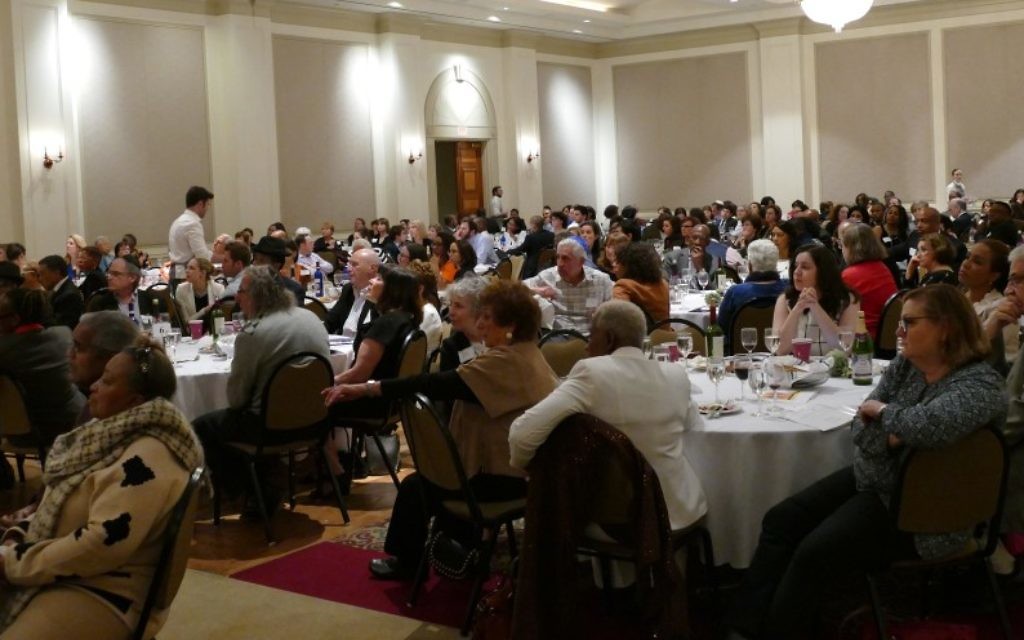Black and Jewish, Okra and Artichoke
The sold-out, biennial Black-Jewish Seder packed the social hall at The Temple on Tuesday, April 5, for a celebration of separate and shared struggles for freedom in the past and present.
The crowd of about 300 people, gathered under the auspices of Atlanta’s Black-Jewish Coalition and American Jewish Committee, maintained a level of excitement from the performance of the Four Questions by a choir of Davis Academy students supplemented by Marist School students, through gospel songs by the Mount Zion Second Baptist Church Choir, to the night’s climax: remarks by 1961 Freedom Rider Hank Thomas.
Thomas emphasized that throughout the civil rights movement, Jews stood side by side with blacks.
Get The AJT Newsletter by email and never miss our top stories Free Sign Up
The full seder meal, including matzah ball soup and brisket, was catered by the General Muir, recently rated the nation’s sixth-best deli in a study by Foursquare.
Each table had a mix of Jews and non-Jews, providing ample opportunities throughout the seder for teaching and learning, including questions about the orange on the seder plate (a story about same-sex marriage provided the explanation this time) and about the okra and the artichoke also on the table.
The okra was there to represent black food heritage, but based on its origins in Ethiopia centuries before the Exodus, it’s possible Moses enjoyed an Egyptian version of gumbo during his days in Pharaoh’s household.
The artichoke proved to be a mystery for the Ashkenazi crowd but was a call back to Sephardic culture in Spain before the expulsion in 1492 and after the expulsion in Italy.





comments